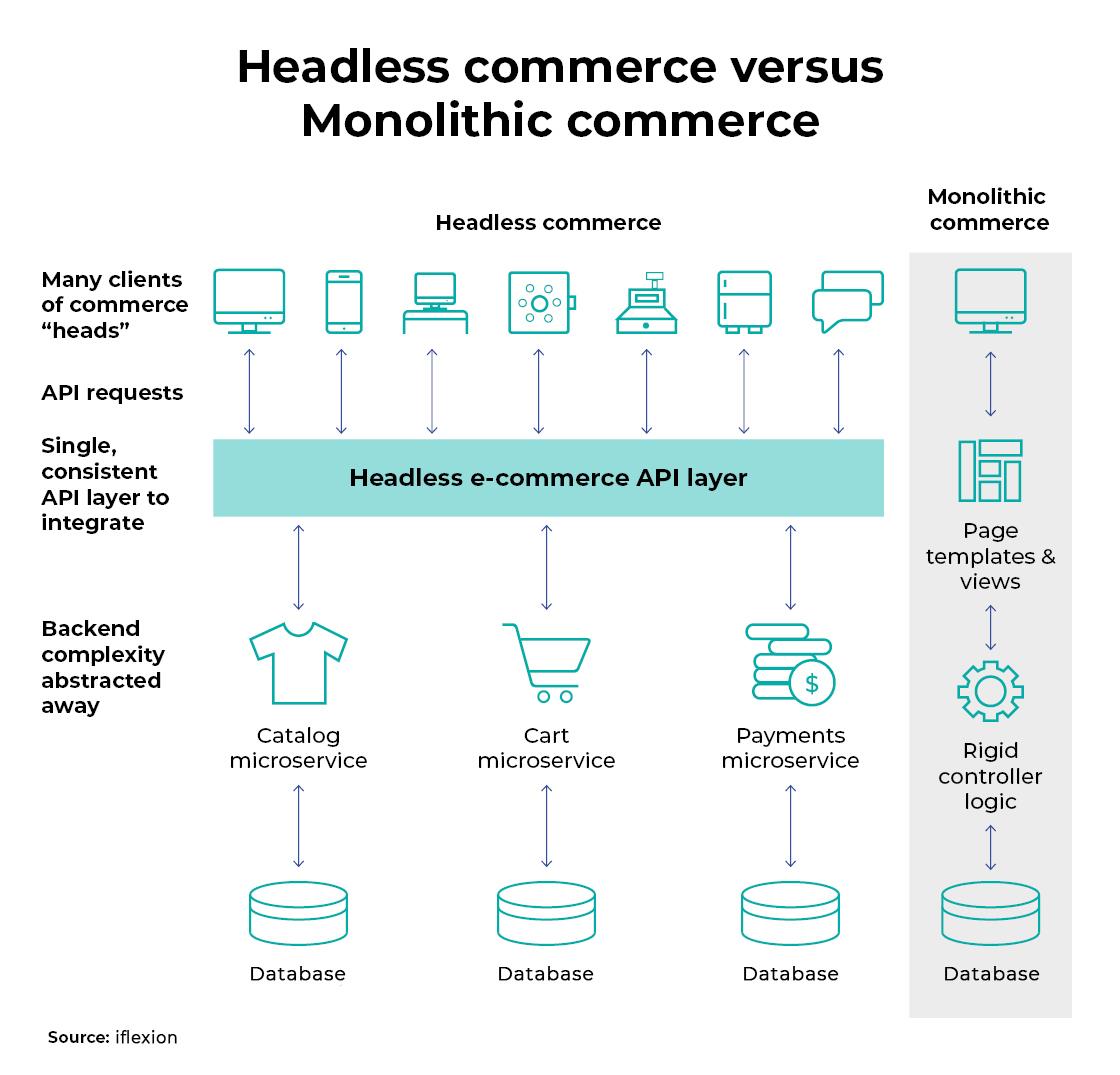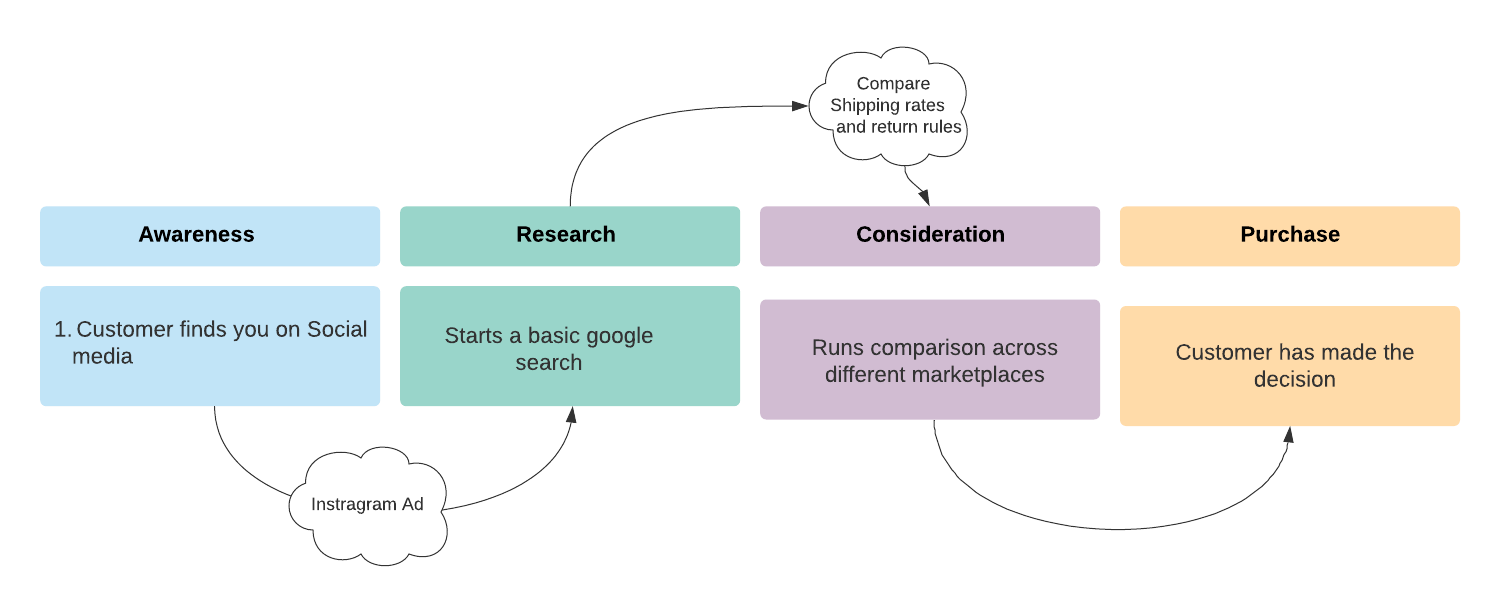The following is a guest blog written by our partners at SolidCommerce.
Understanding the constantly evolving landscape of e-commerce technology is important to scale your ecommerce business and increase your revenue. Before we jump into the best practices, its important to first understand Headless Commerce as it relates to your multi-channel solution.
What is Headless Commerce?
Headless commerce is a way to separate the front and back ends of an e-commerce experience. It provides an easy solution to many of the limitations of traditional e-commerce architecture. The e-commerce front end is a presentation level that can be easily modified without requiring you to have advanced programming knowledge. You can add products and content to your site, and test changes to your application, all done independently of back-end operations so as not to affect the live version of your site.

Why should you care about Headless Commerce?
There are several benefits to headless commerce, such as allowing you to customize your brand vision across channels without development support and the ability to create a high converting user experience.
The outcome?
Merchants will experience increased flexibility and a faster time to market, while consumers benefit from cutting edge and personalized end to end processes in a truly omni-channel experience.
Let's Get into Best Practices
Once you’ve determined that headless commerce is the best strategy for you, here are some best practices for scaling your multi-channel commerce:
- Target customers throughout customer journey
- Leverage the power of marketplaces and search engine
- Pick your Channels Carefully
- Build strong and consistent Processes and Infrastructures
Targeting customers throughout the customer journey
Customers are getting introduced to new brands every day as their interact on social media, you’ll want to be sure to that your brand is one of them! Once you’ve captured their interest, they’re sure to conduct a basic google search to learn more about your brand where they will likely conduct a comparison across different marketplaces to determine where to make their purchase.

Source: SolidCommerce
Leveraging the power of marketplaces and search engines
To scale your business and grow you revenue you’ll want to be sure to select leading technology such as AI that studies consumers shopping behavior and presents your band before they’ve even thought about shopping. Consumers are extremely savy these days, and building trust rapidly should be a key part of your strategy. One way you can do this is by leveraging the marketplaces that consumers are familiar with such as Amazon or Walmart ( if this aligns well with your brand of course). Consumers are familiar with these customer centric marketplaces and your brand will have access to this built in trust and reputation.
Pick your channels carefully
Not every brand aligns well with every marketplace and vice versa, so you’ll want to be particular in choosing the right channel. Here are some tips:
- Brand fit: If you are selling luxury furniture you may not do as well on Walmart as you would on Wayfair for example. Is this channel the right fit for my brand? Do my ideal customers shop on this channel?
- Is this the right category Fit? Does my brands category align with this marketplace? Do customers come to this marketplace when shopping for category? For example, if you sell computers, eBay and amazon are a great category fit.
- Is this a red ocean or Blue Ocean? You’ll want to do your research and be sure to stay away from highly competitive environments that are already saturated for your brand. Stay ahead of trends and identify blue ocean opportunities within different channels. For example, you may find out through research that a current marketplace/channel that focuses on electronics is expanding its categories to electronic accessories, where you can be an early merchant.
- Cost-Benefit: There’s. always the lift that goes with listing on new channels, so you’ll want to make sure that which ever channels you choose, the benefit outweighs the cost,
Multi-channel product information management
Once you’ve decided on the best channels for your brand you’ll want to make sure you have strong processes and infrastructure in place to avoid issues to your customers.
- Listings Management: You’ll need to manage listings properly and maintain listings across channels if you do not want to get penalized from marketplaces. This is especially important for merchants that are seasonal such as apparel that has listings in winter and summer.
- Orders Management: Same can be said with regards to orders management. You’ll want to be sure that whatever multi-channel management platform you choose has the ability to help you manage your orders in a efficient way. For example, proximity routing, your ecommerce solutions should help you determine the shortest route for an order to a warehouse that is closest to the customer – automating this process will help you scale and save you money around shipping.
- Shipping: Automating shipping is critical, as I mentioned above, customers are going to be researching and comparing across different marketplaces for best shipping rates, and return policies.
Many retailers who’ve already chose a multi-channel strategy, have seen their operational costs reduced, while also building brand loyalty. With strong processes and systems in place, retailers can run their multi-channel sales on autopilot.
Feel free to reach out to the team with any questions on how we can work to solve your pain points.


.png)



.jpg)

.png)
.png)